Priests hopping and cawing like crows. Seven year old kids doing sumo. What’s that all got to do with Shinto, you may wonder?
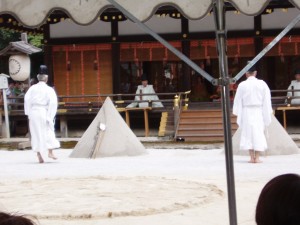
Priest crows gone hopping mad?
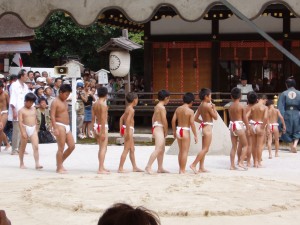
Baby sumo wrestlers
Kamigamo Jinja is Kyoto’s greenest shrine and probably the oldest. It was established by the Kamo clan long before Kammu founded the capital in 794. One of the clan, according to legend, helped guide Emperor Jimmu across Kii Hanto and was known as yatagarasu (the three-legged crow). (See https://www.greenshinto.com/2011/07/25/yatagarasu-the-three-legged-crow/) Personally, I take this to mean he was a shaman of the Crow People, who settled in Kyoto after immigrating from Korea. Their descendants still live in the area around Kamigamo.
At the festival the priests sit in front of two mounds of earth, which represent the sacred hill onto which the shrine’s kami, Kamo Wake-ikazuchi, first descended. The hill, known as Koyama, lies north of the shrine and every year there is a secret ceremony there to reenact the shamanic rites of old.
But why are there two mounds? Interestingly, this recreates the two mounds that stand permanently inside the middle torii. Priests at the shrine say that they represent yin and yang, but they could well signify the theme of renewal in Shinto. At Ise, for instance, a new shrine is built adjacent to the old shrine for the kami to move into. Perhaps the two mounds here act in similar symbolic manner.
The day’s rituals start with the offering of chrysanthemum flowers at 10.00, following which participants proceed from the worship hall to the arena. A colourfully costumed young girl representing the historical saio (imperial princess) presides over events. The initial rites include the shooting of arrows to dispel evil spirits, after which two of the priests do their crow performance.
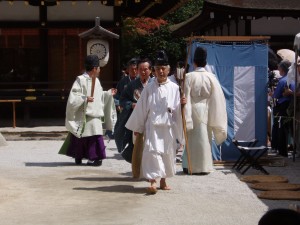
Priest with bow arrives to fire off the purification arrows
The climax is the children’s sumo, put on for the entertainment of the kami. There are two teams, and each boy gets to wrestle two times. The atmosphere can become quite heated, and the crowd usually gets behind the little toddler struggling against a bigger opponent. Cameras flash from all directions. By the end you may feel just as happy as the kami that this ancient tradition has been preserved so long.
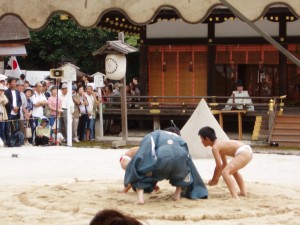
Ready...
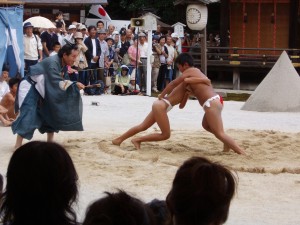
Go!
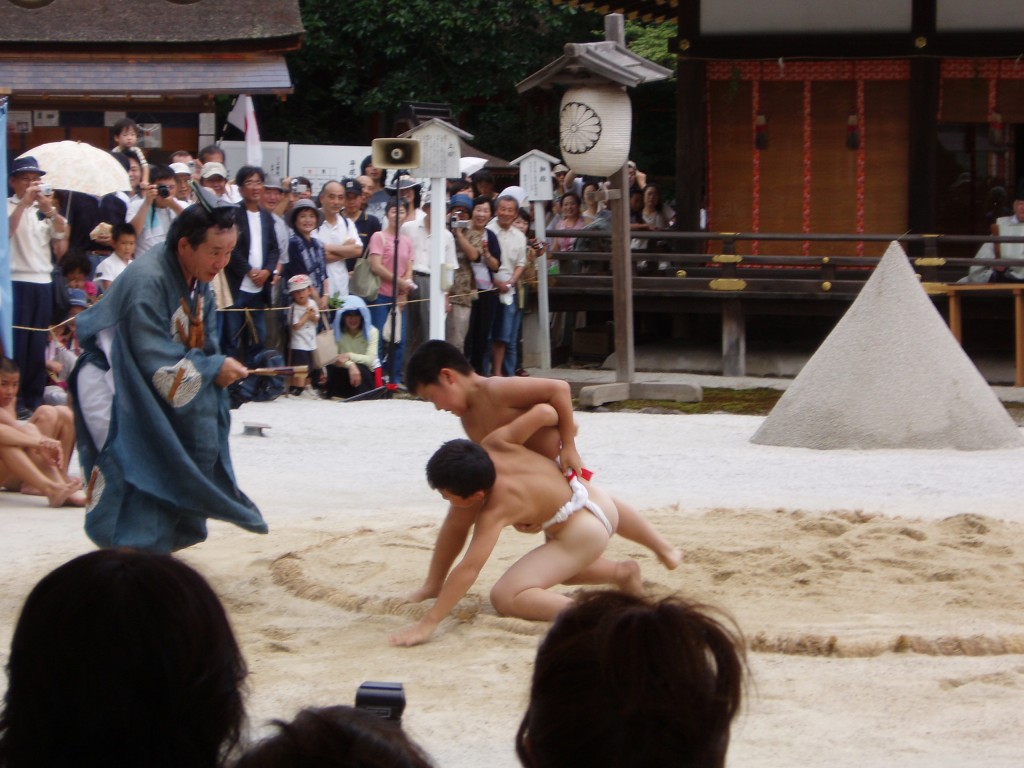
And a clear winner

Leave a Reply